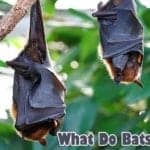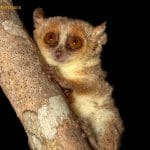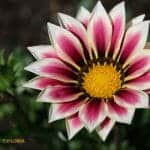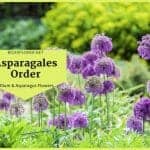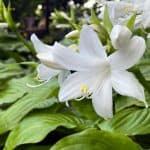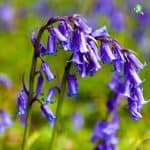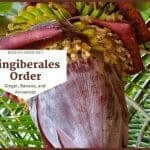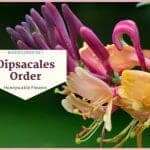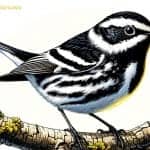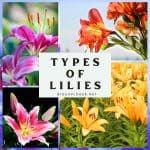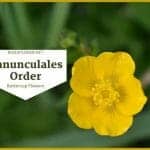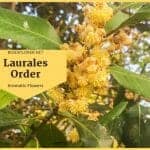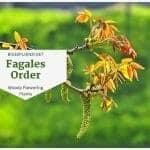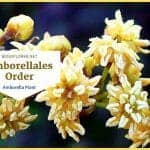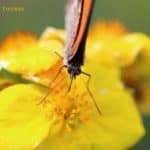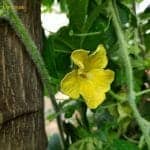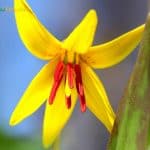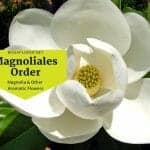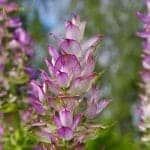top - search results
If you're not happy with the results, please do another search
What Do Bats Eat?
After rodents, bats are the 2nd most popular mammal species. Explore what do bats eat, when do bats eat, bats diet by types, what eats bats & how bats hunt.
What Do Kangaroos Eat?
Kangaroos are marsupials that can only be found in Australia. Kangaroos are mostly herbivores. Explore what do kangaroos eat in detail by their types & more.
What Do Sloths Eat?
Sloths are arboreal creatures commonly found in South & Central America. Explore what do sloths eat, diet by types, how often, how much, & what eats sloths.
Types of Eagles
Explore all 68 types of eagles in this comprehensive guide. Learn about each species' unique traits, habitats, and behaviors across the globe.
Black-faced Lion Tamarin
The black-faced lion tamarin, also known as superagüi lion tamarin, is a small New-World primate in the Callitrichidae family. Black-faced lion tamarins are diurnal and seek refuge in hollows or tree holes at night.
Brown-mantled Tamarin
The brown-mantled tamarin also called the Spix's saddleback tamarin, is a species of saddleback tamarin native to South America. The species are considered "phyletic dwarfs," meaning their small size is linked to their evolutionary development.
Berthe’s Mouse Lemur
Weighing just over an ounce, Berthe's mouse lemur is the world's smallest primate. Endemic to dwindling western Madagascar forests, this nocturnal insectivore faces grave threats from deforestation and predation despite recent habitat protections. Learn surprising facts about its characteristics, behavior, endangered status, and the conservation efforts crucial to saving this tiny species.
What Do Peacocks Eat?
Peacocks are flashy birds renowned for their colorful tail plumage. Explore what do peacocks eat, their diet by types, and what eats peacocks & more here.
All You Need To Know About Leopard Geckos
Among reptiles, the leopard gecko is perhaps one of the most popular. This is the first-ever species of lizard to be domesticated. Learn all about leopard gecko here including appearance, diet, habitat, reproduction and ecological importance.
Gazania
Gazania is an annual and perennial plant known for its extreme tolerance to heat and drought. The flowers of this species are orange with black eyes at the base and orange-brown discs. Hybrid varieties come in various additional hues, including shades of white, bronze, orange, or yellow.
Order Asparagales / Allium and Asparagus Flowers
Asparagales is a monophyletic order that contains many species, including important crop plants such as Allium and Asparagus. This order has 29 families and closer to 50k flowering plants. Popular flower species in this order are day-lily, irises and lilioid monocots.
25 Must-See Colorful Orchids
Discover 25 stunning colorful orchids, from vibrant blues to fiery reds. Explore their unique features, habitats, and the vital role of color in orchid ecology.
Alfalfa
Learn about alfalfa (Medicago sativa), its flower characteristics, cultivation practices, environmental benefits, and economic importance in this comprehensive guide.
August Lily
Discover the August Lily (Hosta plantaginea): a perennial with fragrant white flowers, medicinal properties, and ecological benefits, perfect for shaded gardens and borders.
Bluebell Flower
Explore the enchanting Bluebell flower (Hyacinthoides non-scripta), its vibrant violet-blue blooms, ecological significance, different types of bluebells and fun facts in this comprehensive guide.
Insect Orders
Explore 28 major insect orders under the class Insecta (diverse group of arthropods).Insects play vital roles in ecosystems, from pollination and decomposition to serving as food for other animals.
Azalea
Discover the vibrant world of Azaleas in our comprehensive guide. Learn about different types, ideal planting conditions, care tips, and how to handle common pests and diseases. Perfect your green thumb with our step-by-step guide to planting and propagating these stunning shrubs.
36 Most Colorful Birds In The World!
The most colorful birds give you a clue of the diversity in the world of birds (Aves). Here are the world's beautiful top 36 birds and their features.
Order Zingiberales / Ginger, Orchidantha & Banana Plants
Zingiberales' order comprises several species of great economic importance, like the banana and the ginger. Members have almost restricted distribution to tropical regions. Zingiberales species have ptyxis, large flowers, attractive colors, and inferior ovaries. Banana, Bird-of-paradise, Orchidantha, ginger, costus, and Canna lily are examples of Zingiberales order.
Desert Sand Verbena
The Desert Sand Verbena is a native species of the southwestern United States and Northern Mexico, growing in the sandy areas of the desert. The flowers are trumpet-shaped. The flowers are fragrant with 5 lobes.
America’s 15 Must-Visit Botanical Gardens: Discover Them Today!
From exquisite blooms to exotic plants, our guide to America's top 15 botanical gardens promises enchanting adventures. Don't miss out on these beautiful, botanical must-sees!
43 Blue Flowers Unveiled: Why These Beauties Have Captured Everyone’s Attention?
Discover the hidden secrets of 43 types of blue flowers in our captivating blog post. Explore the rarity of natural blue pigments in flowers and symbolism and meanings of blue flowers.
Order Saxifragales / Saxifrages Flowers
Saxifragales is a morphologically diverse dicotyledonous order of flowering plants worldwide. Saxifragales plants have hypanthium, glandular leaf teeth, serrate lamina margins, free petals, and small seeds. Most Saxifragales flowers are radially symmetrical and bisexual. The example species of Saxifragales are the Irish rose, campfire plant, and gum vine.
Order Liliales / Lily Flowers
Liliales is the lily order of monocotyledonous flowering plants. Members of this order involve herbaceous plants, shrubs, and lianas. Liliales flowers are distributed worldwide but common in the subtropical and temperate regions. Lanzhou Lily, Chilean Bellflower, Katakuri/Trout Lily, and Wood's bunchflower are some of the Liliales example species.
Order Dipsacales / Honeysuckle Flowers
Dipsacales is a eudicotyledonous order of flowering species. Members of Dipsacales show characteristics like pubescent stems, flowers mostly in cymes, and 4-5 floral parts. The Dipsacales flowers are primarily bisexual and are pollinated by insects and/or birds. Honeysuckle, Seven-son flower, Alpine valerian, Mountain snowberry and Japanese snowball flowers are examples of Dipsacales.
Order Malpighiales / Violets Flowers
Malpighiales order is a large group with species primarily distributed in tropical regions. The members of Malpighiales often have toothed and stipulate leaves, 10 free stamens, 3-5 fused carpels, a nectary, superior ovaries, and typically endospermous seeds. Most Malpighiales flowers consist of 5 sepals and 5 petals. The violets, flax, passion flowers, euphorbias, and mangroves are some of the notable species of Malpighiales.
Order Caryophyllales / Pink and Carnation Flowers
Caryophyllales is a large and diverse order of dicotyledonous flowering plants. Members under Caryophyllales are distributed on all the continents and are notable for their morphological uniqueness and ecophysiological adaptations. The flower species of carnation, four o’clock, and cactus belong to Caryophyllales and offer great beneficial use.
Elfin Woods Warbler
Shadow, a timid highland insectivore, the Elfin Woods Warbler (Setophaga angelae), narrowly targets mature humid dwarf forest strangely resembling this tiny bird's stunted, wind-sculpted features. Understand why accelerated warming and upslope development threaten to erase prime island refugia critical to this range-restricted species' survival.
Types of Lilies
Discover the stunning beauty of different types of lilies. From oriental hybrids to unique lily species, learn about the diverse world of lily varieties.
Blooming Texas: 25 Gorgeous Native Flowers Revealed!
Texas is a large state with its own floristic region, having more than 5,000 species of native flowering plants. Because of its diverse landforms, Texas offers many famous blooms for visitors and residents. Explore the top 25 Texas flowers and their characteristics.
Order Alismatales / Aquatic Flowering Plants
Alismatales are an order of aquatic flowering plants, including some well-known species such as the water arum (Calla palustris), Nymphoides peltata, and Japanese water shield (Brasenia schreberi). They are sometimes known as the watermints.
Order Proteales / Sugar-bushes & Water Lotus Flowers
Proteales is a part of peripheral eudicots classified together only recently. The Proteales flowers are small or large and unisexual or bisexual. The American lotus, the Indian lotus, the London plane tree, Wagon tree and large-nut sugar bush are examples of Proteales.
Order Zygophyllales / Creosote Bush Flowers
Order Zygophyllales contains herbs, shrubs, trees, and hemiparasites (rare) limited to tropical or temperate dry or saline regions. The members of the Zygophyllales often have swollen nodes and opposite, resinous, and stipulate leaves. The Zygophyllales flowers are bisexual, with often 5 sepals, 5 petals, 10 stamens, 5 carpels, and a superior ovary. The creosote bush, chaparral, Verawood, and the rhatany are known examples of the Zygophyllales order.
Order Vahliales / Vahlia Flowering Plants
Order Vahliales are erect, branched herbs distributed in Africa and Madagascar to India. The Vahliales plants have simple, opposite, exstipulate leaves, bisexual and paired flowers, pentamerous floral parts, an inferior ovary, and numerous seeds. The Vahliales order only has a sole family, 1 genus, and 5 species.
Order Ranunculales / Buttercup, Barberry & Poppy Flowers
Ranunculales is the order of angiosperms with a worldwide distribution, which are peripheral eudicots with spiral leaves, three openings (colpi) in the pollen, and spectacular floral diversity. The buttercup, Barberry, Moonseed, Chocolate vine and poppy flowers are the famous example species of Ranunculales.
Order Laurales / Aromatic Oil Flowers
Laurales is an order of flowering plants composing trees, shrubs, herbs, and vines. This order comprises seven families. Laurales species are used for lumber, medicinal extracts, essential oils, and ornamentals. Examples include Avocado, Bay Laurel, Limoncillo, Negramina, Grease Nut, Carolina Allspice & more.
Order Fagales / Woody Flowering Plants
Order Fagales also called the beech order, comprises dicotyledonous woody flowering plants. Example plants include Quercus (oak), Fagus (beech), Castanea (chestnut), Juglans (walnut), Carya illinoinensis (pecan), Nothofagus, and cobnuts.
Order Cucurbitales / Begonia, Cucumber & Squash Flowers
The Cucurbitales are an order of flowering plants listed in the rosid group of dicotyledons. The order consists of shrubs, trees, herbs, and climbers including Begonia, Cucumber, and Squash blossoms.
Order Arecales / Palm Tree Flowers
Arecales, the palm order, is one of the most recognizable and significant orders of flowering plants in the tropics and subtropics. A few include the coconut palm (Cocos nucifera), African oil palm (Elaeis guineensis), sago palm (Metroxylon sagu), and date palm (Phoenix dactylifera).
Order Amborellales / Amborella Flower
Amborellales plant order is represented by 1 species, in 1 genus and 1 family. Amborella trichopoda is the only flower species under the family Amborellaceae. Explore distribution, characteristics, flower structure, and species details here.
Order Asterales / Daisy and Sunflower
Asterales is a dicotyledonous order of flowering plants that holds ten percent of the angiosperm species diversity. Common sunflower, common daisy, Toropapa, Hydrangea, Bogbean, Water snowflake, and Cobalt mound are some of the beautiful flowers in Asterales.
Silverweed
Potentilla anserine, also known as silverweed, goosegrass, or silverweed cinquefoil, is a prostrate perennial herb in the Rosaceae (rose) family. Silverweed is the only plant in the Potentilla genus with pinnate compound leaves and individual flowers on separate stems.
Pansy
Pansy is one of the first heralds of spring in gardens, but its ability to thrive in cold climates makes it a staple for fall planting and garden beds. Garden pansy (Viola × wittrockiana) is a large-flowered hybrid plant grown as a garden flower.
Elastic Momordica
Elastic Momordica is an annual, climbing, or extensive perennial, monoecious herbaceous plant, 2 to 3 meters tall. It can be slightly hairy or hairless. The golden-yellow flowers are erect individually in the axils of the upper leaves on stems 2-10 cm long.
Chinese Peony
Paeonia lactiflora is a flowering plant that can grow 20-28 inches tall. The Chinese Peony is a perennial herb of the family Paeoniaceae. Peony is named after Paeon, the Greek god of medicine and healing.
Adder’s Tongue
Erythronium americanum is a perennial herb that belongs to the family Liliaceae. This species is a native range of Eastern North America. The common name of Adder's Tongue is given because of the shape of the flowering shoot.
Order Magnoliales / Magnolia & Other Aromatic Flowers
Magnoliales is the oldest flowering order that existed before bees were evolved. Angiosperms in this order comprise 6 families, 128 genera, and approximately 3,140 species. Nutmeg, Lancewood, Magnolia grandiflora, charismatic Michelia champaca, and Degeneria roseiflora (endemic to Fiji) are some of the examples of Magnoliales order.
Clary sage
Clary sage originates from the Mediterranean region (North Africa, Central Asia, and southern Europe). The genus Salvia contains around 960 different species of woody and herbaceous plants in the Lamiaceae (mint) family. The flower stalks appear in the second year and reach a height of 3-4", crowned with flower heads small, double-lipped, tubular, lilac to creamy white flowers.
Order Malvales / Hibiscus & Mallow Flowers
Malvales is a medium-sized order, commonly called the Hibiscus or mallow order, mainly consisting of woody plants that feature showy five-petaled flowers with an epicalyx. The order comprises 10 families, 338 genera, and around 6,000 species. Gossypium, Edgeworthia, Daphne, Gnidia, and Chinese Hibiscus are flowers in Malvales.
Order Celastrales / Bittersweet Flowers
Celastrales are trees and shrubs mainly distributed throughout the tropics and subtropics. Order Celastrales members are primarily distributed throughout the tropics and subtropics.
Order Dasypogonales / Tinsel Lily Flowers
Dasypogogonales is an order of flowering plants comprising shrubs and herbs with paleotropical and Australian distribution. Members of the Dasypogonales mostly have spiral, simple, and sessile leaves, bisexual flowers, and perianth consisting of tepals. Order Dasypogonales is placed under Commelinids. It only has 1 direct family, Dasypogonaceae, with 4 genera.
Order Metteniusales / White Pear Blossoms
Metteniusales are trees, shrubs, or lianas with chiefly tropical distribution. Metteniusales is an order of flowering plants with only 1 family, 11 genera, and 55 species. Metteniusaceae is the only family of Metteniusales. The members are found in the tropical regions of the Old World, Mexico, Central America, and the West Indies.
Copao
Eulychnia iquiquensis is treelike cactus of the Order Caryophyllales. It is endemic to the northern part of the Atacama Desert. The genus name Eulychnia is derived from the Greek words (eu and lychnos). Its English translation is "beautiful lamp".
Mallow
Mallow belongs to the large family of Malvaceae plants, which includes hibiscus, okra, and cotton. The flowers are single or in clusters in the leaf axils, which bloom from early summer to late autumn. They have five petals and are lilac, pinkish, or white flowers with an average width of 1 to 1.5 cm.
May Birth Flowers
Unveil the significance of May birth flowers! Discover the hidden meanings and symbolism behind Lily of the Valley and Hawthorn in this insightful blog post.
July Birth Flowers
Dive into the captivating meanings behind July birth flowers: Larkspur and Water Lily. Learn how to honor July-borns with these vibrant blossoms.
Matsumoto
The Matsumoto aster (aka Japanese Aster), part of the Chinese aster series, is native to East Asia and is a much sought-after and admired flower. The Matsumoto aster flaunts its always yellow inner flowers by surrounding them with red, purple, lavender, pink, or white flowers, to name a few.
85 Different Types of White Flowers For Your Garden!
Discover the captivating world of the top 85+ white flowers, from the iconic Lily of the Valley to the lesser-known Snowball Viburnum. Explore their enchanting beauty, rich symbolism, and fascinating scientific facts in this comprehensive guide.
Marine Iguana
A comprehensive guide to the Galápagos marine iguana (Amblyrhynchus cristatus) - the world's only seagoing lizard. Learn all about their taxonomy, adaptations for life in coastal habitats, feeding behaviors, social dynamics, threats to survival, and conservation status of this iconic species endemic to the Galápagos Islands of Ecuador.
Types of Amphibians
Explore 3 different types of amphibians in the animal kingdom. Learn 9 key features of amphibians including cold-blooded, dual-life, permeable skin and more.


